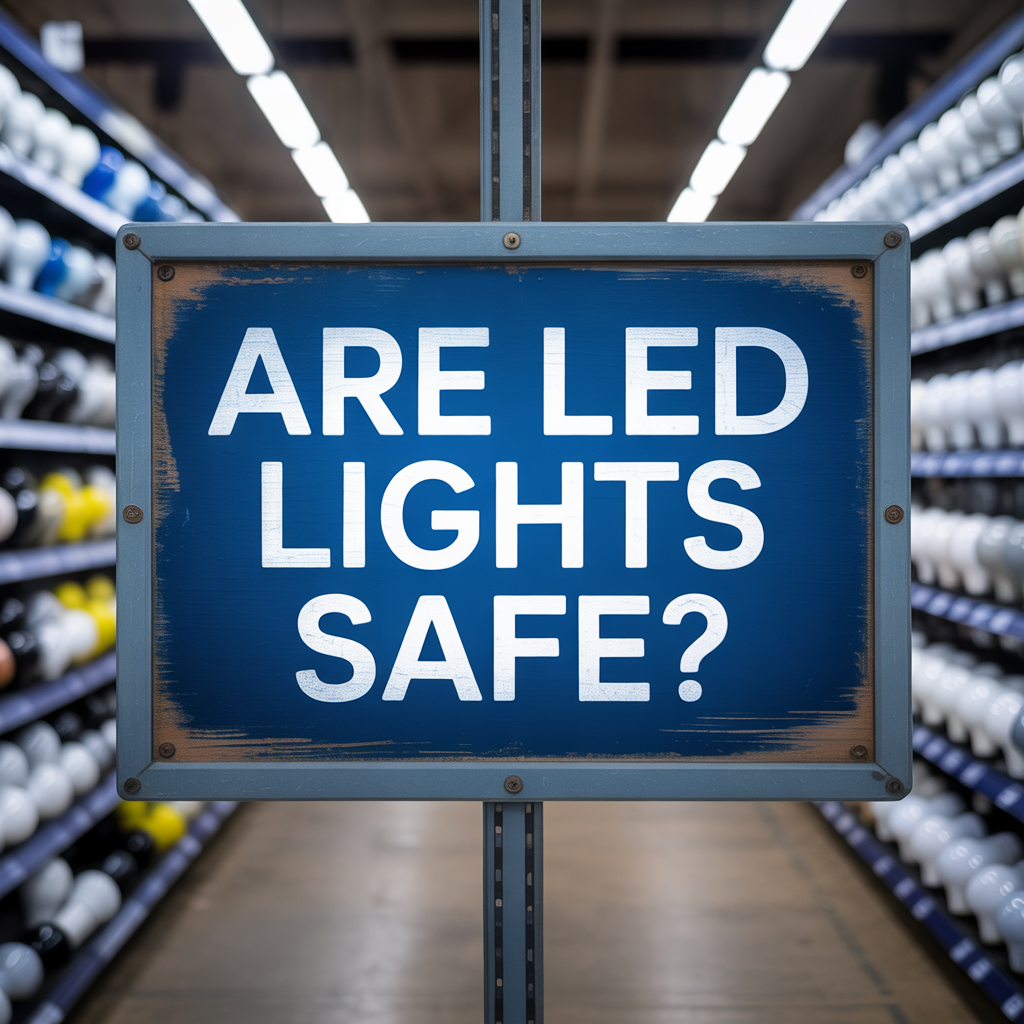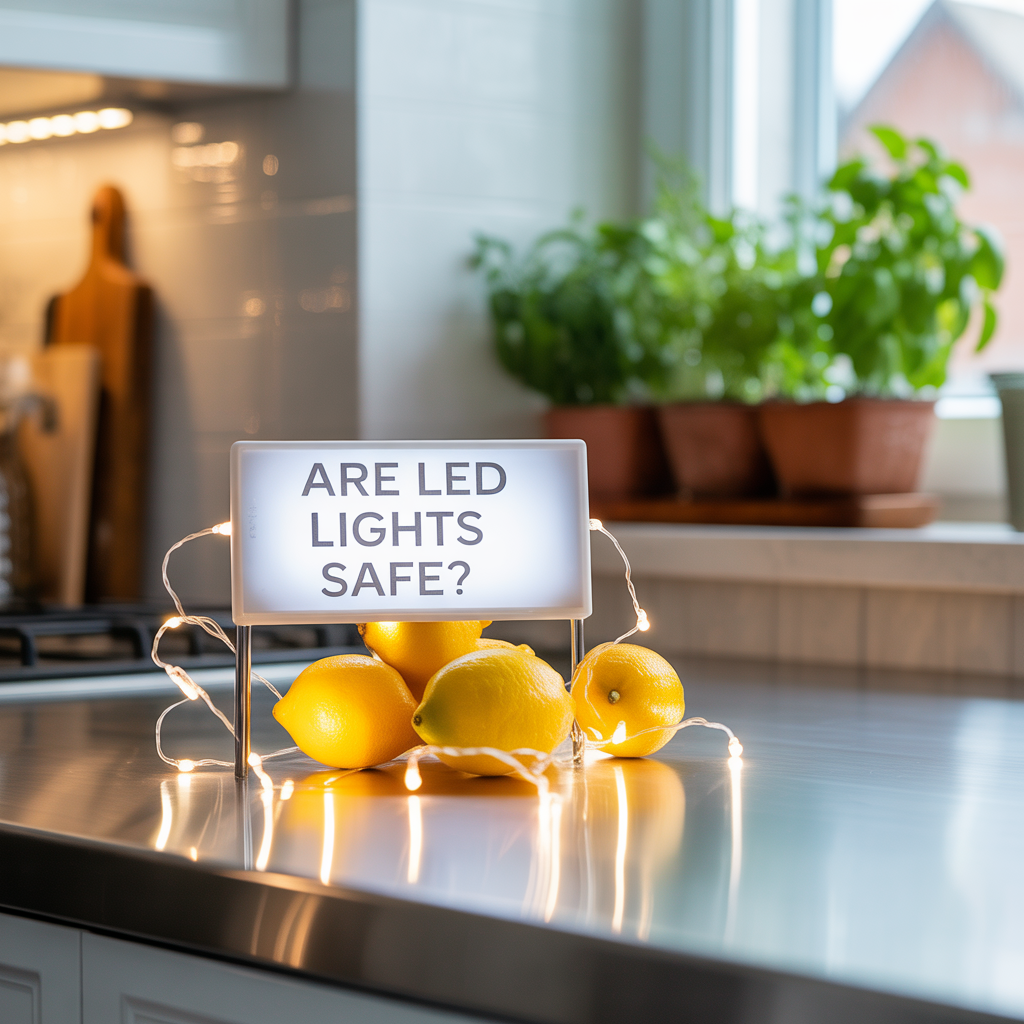Are LED Lights Safe? A Scientific Answer For You
Are LED lights safe? This is a question many people ask, especially with the increasing popularity of LED lighting in homes and businesses. This comprehensive guide will delve into the safety aspects of LED lights, exploring potential risks, addressing common concerns, and providing you with the knowledge to make informed decisions about their use. We’ll…
Are LED lights safe? This is a question many people ask, especially with the increasing popularity of LED lighting in homes and businesses. This comprehensive guide will delve into the safety aspects of LED lights, exploring potential risks, addressing common concerns, and providing you with the knowledge to make informed decisions about their use. We’ll examine the technology behind LEDs, their potential health effects, environmental considerations, and more. By the end, you’ll have a clear understanding of whether LED lights are indeed safe for you and your family.
Yes, LED lights are safe for general use. They emit very low levels of UV radiation, generate minimal heat, and are energy-efficient. However, prolonged exposure to intense blue light from some LEDs may cause eye strain, so using warm or diffused lighting is recommended for comfort and safety.
Light-emitting diodes (LEDs) are semiconductor devices that convert electricity directly into light. Unlike incandescent bulbs that produce light through heat, LEDs are much more energy-efficient. They work by passing an electric current through a semiconductor material, causing electrons to jump energy levels and emit photons – particles of light.
Are LED Lights Safe?
Types of LEDs and Their Applications

LEDs come in various colors and designs, suitable for various applications. From small indicator lights to powerful streetlights, LEDs are incredibly versatile. Different materials and manufacturing processes determine their color, brightness, and lifespan.
-
- White LEDs are often created by combining a blue LED with a yellow phosphor.
- Colored LEDs use different semiconductor materials to produce specific wavelengths of light.
- High-power LEDs are used in lighting fixtures, while lower-power LEDs are found in electronics.
Read More: Why Do LED Lights Flicker On Camera? A Comprehensive Guide
Potential Health Concerns Related to LED Lights
Blue Light Emission and Eye Strain
LEDs, particularly those emitting higher amounts of blue light, can contribute to eye strain, headaches, and disrupted sleep patterns. Blue light, while necessary for regulating our circadian rhythm during daylight hours, can be harmful at night. Choosing LEDs with lower blue light emission or using blue light filters can mitigate these issues.
UV Radiation and Skin Damage
Some LEDs, especially those of lower quality or improperly shielded, may emit small amounts of ultraviolet (UV) radiation. While typically minimal, prolonged exposure to UV radiation can contribute to skin aging and increase the risk of skin cancer. Ensure you are using high-quality LED lights with proper shielding to minimize this risk.
Flickering and Headaches
Poorly designed or damaged LED lights can flicker, leading to headaches, eye strain, and even seizures in susceptible individuals. Ensure that your LED lights operate smoothly and consistently. Check for flickering and consider replacing any malfunctioning units.
Read More: Where Can I Cut on a Govvee LED Strip Lights?
Environmental Considerations of LED Lights

Energy Efficiency and Reduced Carbon Footprint
LEDs are significantly more energy-efficient than incandescent and even CFL bulbs. This reduces energy consumption and lowers carbon emissions, contributing to a smaller environmental footprint. Replacing older lighting technologies with LEDs is a simple way to reduce your environmental impact.
Mercury Content and Disposal
Unlike CFL bulbs, which contain mercury, LEDs are mercury-free. However, proper disposal of LED lights is still important, as they contain other materials that should be recycled responsibly to prevent environmental pollution.
Manufacturing and Resource Consumption
The manufacturing process of LEDs involves various materials and energy, which can have environmental implications. Choosing LEDs from companies committed to sustainable manufacturing practices can help mitigate these concerns.
Read More: 12 Beautiful Dorm Room Ideas with LED Lights
Comparing LED Lights to Other Lighting Technologies
LEDs vs. Incandescent Bulbs
Incandescent bulbs generate significant heat, leading to energy waste. LEDs are much more efficient and produce far less heat. They also offer a much longer lifespan.
LEDs vs. CFL Bulbs
CFLs contain mercury and can take time to reach full brightness. LEDs are mercury-free, instantly turn on, and boast a longer lifespan. They also offer a wider range of color temperatures.
LEDs vs. Fluorescent Lights
Fluorescent lights can be bulky and contain mercury. LEDs offer compact designs and are mercury-free, making them a more environmentally friendly alternative.
Selecting Safe and Efficient LED Lights
Choosing the Right Color Temperature
Color temperature is measured in Kelvin (K). Lower Kelvin values (2700-3000K) produce warm light, while higher values (5000-6500K) produce cool light. Choose the color temperature that best suits your needs and environment.
Understanding Lumen Output
Lumens measure the total amount of light emitted. Higher lumens indicate brighter light. Choose the lumen output that provides adequate illumination for the space you are lighting.
Checking for Certifications and Safety Standards
Look for certifications like UL or ETL, which indicate that the product has been tested and meets safety standards. These certifications help ensure the quality and safety of the LED lights you are purchasing.
Installing and Maintaining LED Lights
Proper Installation Techniques
Always follow the manufacturer’s instructions for installation. Ensure that the lights are properly grounded and protected from moisture.
Regular Maintenance and Cleaning
Regularly clean LED lights to maintain optimal performance and prevent dust buildup. Avoid touching the LED chip directly, as this could damage it.
Troubleshooting and Replacing Faulty Units
If an LED light malfunctions, unplug it immediately and contact a qualified electrician to repair or replace it. Never attempt to repair an LED light yourself unless you are qualified to do so.
Are LED Lights Safe for Children and Pets?
LED lights are generally safe for children and pets, but it’s crucial to select lights that meet safety standards and are adequately protected from being easily damaged or accessible. High-quality LEDs with robust casings minimize the risk of breakage and potential hazards.
The Role of Dimmers and Smart Lighting Systems
Dimmers can help control the brightness of LED lights, reducing glare and improving eye comfort. Smart lighting systems can further enhance control and convenience, allowing for customized lighting schemes and automation.
Debunking Myths About LED Lights
Some misconceptions surround LED lights, such as the belief that they cause cancer. While high-intensity UV radiation can be a concern, properly shielded and certified LEDs pose minimal risk. Most health concerns are related to blue light exposure, which can be mitigated with careful selection and use of appropriate lighting.
Frequently Asked Questions
What are the long-term effects of LED light exposure?
Long-term effects are largely dependent on the quality of the LEDs and the duration of exposure. Excessive exposure to blue-rich LED light can potentially contribute to eye strain, sleep disturbances, and potentially increase the risk of age-related macular degeneration. However, responsible use and selection of appropriate LEDs with lower blue light emission should mitigate most of these risks.
Are LED lights energy-efficient?
Yes, LEDs are significantly more energy-efficient than incandescent and CFL bulbs. They convert a much larger portion of electricity into light, resulting in lower energy bills and reduced environmental impact.
Can LED lights cause seizures?
Flickering LED lights can trigger seizures in individuals susceptible to photosensitive epilepsy. Ensuring lights are not flickering and choosing high-quality, stable lights is crucial for preventing this risk.
How long do LED lights last?
LED lights typically have a lifespan of 25,000 to 50,000 hours, significantly longer than incandescent or CFL bulbs.
Are LED lights recyclable?
Yes, many LED lights are recyclable, though the recycling process may vary depending on the region. Check with your local waste management facility for guidelines on proper disposal.
Can I use LED lights in my bathroom?
Yes, as long as the LED lights are specifically designed for damp or wet locations and have the appropriate IP rating (Ingress Protection rating). Ensure the lights meet safety standards for bathroom use to prevent electrical hazards.
Final Thoughts
The question, “Are LED lights safe?” is complex. While some concerns regarding blue light emission and potential UV radiation exist, these are largely manageable through careful selection and responsible use. High-quality LEDs, properly installed and maintained, offer significant advantages over older lighting technologies in terms of energy efficiency, longevity, and environmental impact. The key is to choose LEDs with low blue light emission, ensure proper shielding, and avoid exposure to flickering lights. By understanding the technology and making informed choices, you can reap the benefits of LED lighting while mitigating potential risks. Consider switching to energy-efficient and long-lasting LED lights today to contribute to a brighter and more sustainable future.

